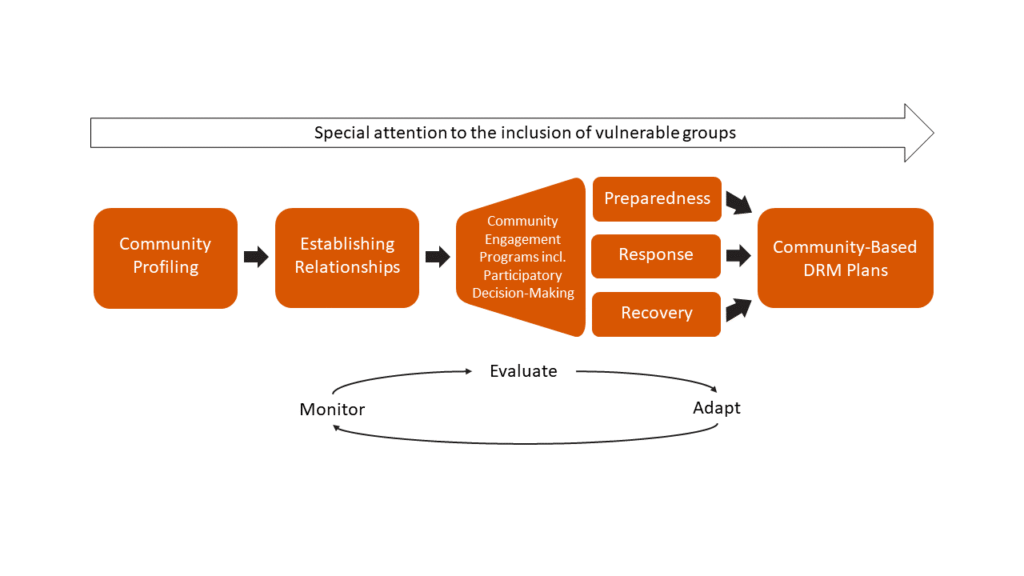Developing a PANTHEON Participatory Governance Model

As part of PANTHEON’s groundwork for disaster-resilient community approaches, a participatory governance model has been developed to provide recommendations on approaches for effective and inclusive community participation in all aspects of disaster risk management (DRM). The goal is to inform, mobilise and organise communities, with a specific focus on vulnerable groups, to participate in preparedness, response, and recovery.
Exploring Decentralised and Participatory Governance
A comprehensive literature review was conducted covering key concepts such as participatory governance, community, vulnerability, and resilience. The state-of-the-art decentralised and participatory governance was analysed in detail, discussing the opportunities and challenges of community-based disaster resilience based on academic discourse and practical evidence. Different modes of community engagement were systematically explored, ranging from simply informing communities to actively empowering them to take ownership. Specific considerations for engaging diverse urban communities were also discussed, based on examples of participatory urban governance initiatives.
Community Participation in DRM: Insights and Recommendations
The methodological approach rigorously combined this in-depth literature analysis with qualitative empirical research. Two two-hour interactive workshops were organised with seven experts from fields like emergency management, civil protection, and disaster research to gather on-the-ground insights and recommendations. Additionally, a survey was conducted to further capture experiences with community participation in DRM. The findings were thoroughly analysed using qualitative data analysis. Together with insights from the literature, these findings were used to develop well- grounded recommendations.
Key findings from the empirical research were insightfully structured along the process of community engagement. This covered understanding the focus communities, establishing trusted relationships by identifying facilitators and overcoming trust barriers, practically informing and mobilising communities across disaster phases using context-specific tools, and diligently ensuring sustainable impact through cultural awareness and inclusivity. Both facilitating factors and hindering barriers are discussed in nuance.
Highly tailored recommendations, coherently structured according to the community engagement process and disaster management phases, are presented as a result of the report. They cover vital areas like two-way communication, relationship building, participatory vulnerability assessments, inclusive citizen training programs, collaborative planning mechanisms, supporting grassroots initiatives, and proactively engaging vulnerable groups.

A comprehensive participatory governance model is proposed based on the findings encompassing an iterative approach of community profiling, leveraging local networks, installing community liaison officers, implementing tailored engagement initiatives, monitoring, evaluating, and adapting. Ensuring the inclusivity of vulnerable groups was emphasised as a cross-cutting priority.
In summary, this report rigorously develops a practical framework and actionable guidelines for implementing inclusive community participation programs within disaster risk management, specifically considering the context of the PANTHEON project. The evidence-based recommendations can crucially guide efforts to actively engage all sections of communities, especially vulnerable groups, across all aspects of disaster preparedness, response, and recovery.
